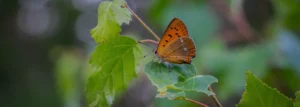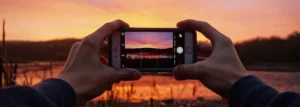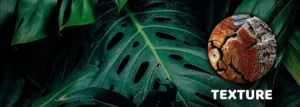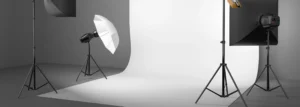Texture is a fundamental element in photography that can elevate the quality and impact of your images. Whether it’s capturing the intricate details of everyday objects or exploring the textures found in nature, understanding how to effectively use texture in photography can add a new level of creativity and depth to your work.
In this article, we will explore the concept of texture in photography, discuss camera settings and techniques for capturing textures, provide tips on finding and creating beautiful texture photography, and reveal how to use light, texture, and editing to enhance your images.
What is Texture in Photography?
In photography, texture refers to the visual representation of how something physically feels. It encompasses the details, patterns, and contrasts that define the surface characteristics of a subject.
Textures can be smooth, rough, gritty, or any other tactile quality that can be visually perceived. Understanding and utilizing texture in photography allows you to create visually engaging images that evoke a sense of touch and add a three-dimensional quality to your photos.
Also Read this: What is role of Product Infographics in Amazon Listing
How to Photograph Textures – Settings and Camera Tips
Capturing textures requires careful consideration of camera settings and techniques. Here are some tips to help you photograph textures effectively:
Aperture and Depth of Field
The choice of aperture plays a crucial role in photographing textures. A higher f-number, such as f/6 or higher, allows for a greater depth of field, ensuring that the details of the texture are captured sharply.
On the other hand, a lower f-number can create a shallow depth of field, resulting in a blurred background that can enhance the texture by providing a sense of depth and separation.
Tripod and Stability
To ensure the sharpness of your texture shots, it is essential to minimize camera shake. Even the slightest hand movements can significantly affect the outcome of your photographs.
A tripod provides stability and eliminates vibration, allowing you to capture textures with utmost clarity. Additionally, utilizing a timer or remote can further reduce the risk of camera shake, especially when aiming for obvious images.
Lens Selection
The choice of lens is not as critical in texture photography as it is in other genres. Since the focus is on capturing intricate details, you can use almost any lens available to you.
However, it is worth noting that macro lenses or lenses with a high magnification capability can offer greater flexibility and precision when photographing textures up close.

Finding Beautiful Texture Photography
Textures can be found all around us, waiting to be discovered and captured through the lens of a camera. Here are some tips on finding beautiful texture photography:
Exploring the Outdoors
Embark on a walk in your local park or nature reserve and observe the world around you. Pay attention to the different elements that catch your eye, such as the roughness of tree bark, the patterns on rocks, or the intricate textures of leaves.
By immersing yourself in nature, you will encounter a rich variety of textures that can serve as inspiration for your photography.
Uncovering Hidden Gems at Home
Don’t underestimate the potential for texture photography within the confines of your own home.
Everyday objects and surfaces, such as fabrics, wallpapers, or even the peeling paint on an old furniture piece, can offer unique textures that are often overlooked.
Take a closer look at your surroundings and experiment with different angles and lighting conditions to reveal captivating textures.
Urban Exploration
Cities and urban environments are treasure troves of texture opportunities. The weathered surfaces of buildings, graffiti-covered walls, and the intricate textures of street art all offer exciting possibilities for texture photography.
Take a stroll through city streets or visit a local market to discover the hidden textures waiting to be captured.

Making Your Textures
Creating your textures opens up a world of creative possibilities. You don’t need to be an artist or possess advanced technical skills to produce stunning textures. Here are some simple ways to make your textures for photography:
Abstract Art
Experiment with abstract painting techniques using various mediums and tools. The random brushstrokes, splatters, and textures created during the process can result in unique and visually striking patterns that can be captured with your camera.
Nature’s Treasures
Collect natural objects such as pebbles, leaves, or dried flowers and arrange them in interesting compositions. These organic textures can be photographed up close to reveal the intricate details, or used as elements within a larger scene to add depth and visual interest.
Action and Movement
Combining movement with random objects can lead to unexpected and captivating textures. Consider capturing flying hair, flour in motion, or water splashes to create dynamic and visually intriguing textures.
For a cleaner alternative, experiment with spraying water or throwing leaves to add a touch of spontaneity to your texture photography.
Using Light to Enhance Textures
The right lighting can enhance textures, adding depth and dimension to your images. Here are some tips for using light to bring out the best in your texture photography:
Natural Light
Natural light offers a wide range of possibilities for capturing textures. The quality of light changes throughout the day, providing different levels of contrast and intensity.
Avoid harsh midday light, as it can create excessive contrast and wash out the details of textures. Instead, aim for the softer, more diffused light during the golden hours of sunrise and sunset. This gentle light can beautifully accentuate textures, adding a warm and inviting quality to your images.
Artificial Light
When natural light is not readily available or doesn’t suit the desired atmosphere, artificial light can be a valuable tool. Create your studio setup using a simple backdrop and a light source such as a lamp or torch.
This allows you to have complete control over the lighting conditions, enabling you to experiment with different angles, contrasts, and brightness levels. By manipulating light, you can accentuate the textures in your subjects and create visually stunning images.

Enhancing Portraits with Texture
Textures can add depth, vibrance, and contrast to portrait photography. Whether it’s capturing the details of human features or utilizing textures in the background, here are some tips for incorporating textures into your portrait work:
Focusing on Human Textures
In portrait photography, human textures such as hair, wrinkles, and freckles can be a powerful visual element. Capture these textures up close to highlight their unique characteristics. The closer you get, the more detailed and striking your photos will be. Celebrate the natural beauty of these textures by ensuring they are well-lit and sharply focused.
Backgrounds and Complementary Colors
When selecting backgrounds for portrait photography, choose textures that complement your subject rather than overpowering them. Avoid busy or distracting patterns that may detract from the main focus of the image.
Instead, opt for pastels, plain colors, or subtly wrinkled surfaces that enhance the subject without overwhelming them. These backgrounds can create a harmonious visual balance and draw attention to the texture of the subject.
Diptychs and Special Events
Texture photography can also be utilized in special event shoots or diptychs, where two images are combined to create a photo collage.
These techniques allow you to incorporate textures in unique and creative ways, capturing subtle details and moments that clients will cherish. Experiment with different textures and compositions to create visually compelling imagery.
Creating Stunning Double Exposures with Texture
Double exposures offer a creative approach to incorporating textures into your photography. By merging two or more images, you can create unique and visually captivating compositions. Here are some tips for creating stunning double exposures using textures:
Silhouettes and Landscapes
One popular approach to double exposures is combining a silhouette with a landscape, portrait, or texture that tells a story through the silhouette. Incorporating textures into the primary image can add visual interest and depth.
Experiment with multiple textures to create complex and thought-provoking compositions that evoke emotions and convey a narrative.
Capturing Texture Resources
During your regular photoshoots, take a few minutes to capture textures and landscapes that can be used as resources for future double-exposure projects.
These texture shots can be saved in a dedicated resource folder, ready to be combined with other images to create unique and compelling double exposures.
Don’t underestimate the value of these seemingly ordinary shots; they may become the missing pieces that complete your creative vision in the future.
Beyond Silhouettes
While silhouettes are commonly used in double exposures, don’t limit yourself to this approach. Experiment with different types of images and textures, allowing your creativity to guide you.
Combine portraits with detailed textures or blend multiple textures to create abstract and visually striking compositions. The possibilities are endless when it comes to double exposures and textures.

Editing Texture in Photography
Post-processing is an essential part of texture photography, allowing you to enhance the details and overall impact of your images. Here are some editing techniques to make your textures stand out:
Contrast
Adjusting the contrast can breathe life into even the dullest of textures. Increase the contrast slightly to enhance the details and make the textures more visually striking. However, be cautious not to overdo it, as excessive contrast can result in a dark and oversaturated image.
Clarity
The clarity tool can add depth and definition to every detail in your photo. Experiment with different levels of clarity to find the right balance. In texture photography, where there are no distinct facial features or prominent subjects, a higher clarity setting can enhance the textures without compromising the overall image.
Shadows and Blacks
Fine-tuning the shadows and blacks in your image can create a more atmospheric and moody look. Moving the sliders slightly to the left can add a touch of mystery and depth to your texture photography.
However, be mindful of the overall impact, as adjustments to the blacks can have a more dramatic effect on your photos than shadows.
Conclusion
Texture in photography opens up a world of creative possibilities. By understanding the concept of texture and learning how to effectively capture and utilize it, you can add depth, vibrance, and visual interest to your images.
Whether you find textures in the natural world, create your own, or incorporate them into portraits or double exposures, textures can elevate your photography to new heights.
Experiment with different techniques, lighting conditions, and editing tools to unleash your creativity and create stunning texture photography.
Remember, the more you explore and appreciate the textures around you, the more beauty and photo opportunities you will discover. Embrace the tactile quality of photography and let texture be your guide in capturing the world through your lens.


No Comments